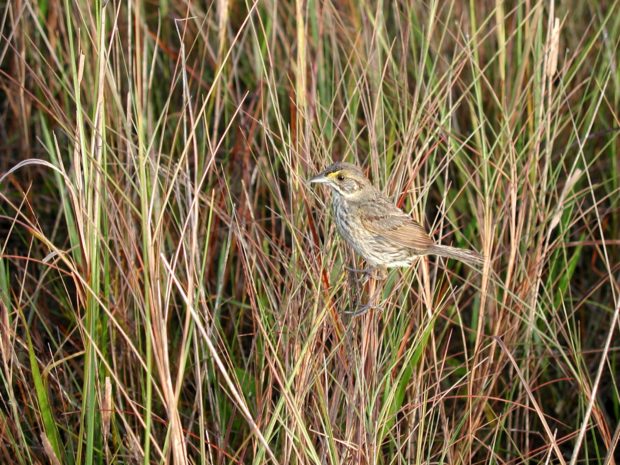We have much more to do and your continued support is needed now more than ever.
Closing the Gaps in Gulf Restoration
For most people, the acronyms NFWF, NRDA and even RESTORE may look like gibberish, but these collections of letters represent funding streams for restoring the Gulf in the wake of the 2010 Deepwater Horizon oil spill. Each of these funding streams has its unique goals and limitations–and its own critical place in the restoration puzzle:
- National Fish and Wildlife Foundation’s Gulf Environmental Benefit Fund (NFWF GEBF) was created from BP and Transocean’s criminal penalties to fund projects benefiting the natural resources impacted by the spill, including barrier island and river diversion projects in Louisiana.
- The Natural Resource Damage Assessment (NRDA) penalties under the Oil Pollution Act seek to “fix what was broken” by attempting to restore habitats, resources, and services to pre-spill conditions.
- The RESTORE Act directs 80% of Clean Water Act penalties from the spill back to the Gulf States, with 30% of the funds dedicated to improving the long-term health and resilience of the Gulf Coast region.
Adding to the restoration alphabet soup, last week the National Fish and Wildlife Foundation announced the Gulf Coast Conservation Grants Program (GCCGP). This new program tries to identify gaps in ongoing Gulf restoration efforts, supporting important conservation needs not expected to get other funding.
The initial 29 grants, totaling $13 million and generating $15.8 million in matching funds, include many important projects that fall in line with NWF’s general principles for Gulf restoration:
Restoring the Balance between Fresh and Saltwater: Cape Sable Restoration in Everglades National Park
At the southernmost point of the U.S. mainland, Cape Sable provides rich fishing grounds and critical habitat for shorebirds, sea turtles, and the American crocodile. Its wetlands offer invaluable protection to south Florida against hurricanes and tropical storms. Unfortunately, Cape Sable’s delicate wetlands were sliced through by manmade canals, resulting in tidal erosion and collapse of freshwater marsh soils. Increased saltwater intrusion from storm surge and sea level rise has further exacerbated marsh collapse.
As Dr. Thomas Van Lent, the Everglades Foundation’s Director of Science and Policy said, “Cape Sable has suffered enormously, and the damage threatens the health of Florida Bay.” With this funding, the Everglades Foundation will work to reverse Cape Sable’s decline by plugging these canals, slowing the erosion and restoring the balance between fresh and saltwater.

Protecting Critical Landscapes: Private Landowner Conservation
The five states bordering the Gulf of Mexico cover a vast amount of territory, 86% of which is in private hands. This adds up to 250 million acres of privately held agricultural and forested lands—a number that is impossible to ignore when attempting to improve the health of the Gulf Coast. Using capacity building, expanded partnerships, and technical assistance and outreach, the Alabama Wildlife Federation (AWF), one of NWF’s affiliate partners, will work to increase landowner engagement and stewardship on private lands in Alabama’s coastal counties, eliminating threats wildlife habitats in the process.
“Over the years, we’ve helped over a thousand landowners take positive steps for wildlife on more than half a million acres across the state, so we are well-poised to expand these efforts on Alabama’s Gulf Coast.” – AWF Director, Tim Gothard
Restoring Oyster Reefs: Community Oyster Shell Recycling
The iconic Gulf oyster is more than just a tasty snack – it provides important foraging and refuge habitat for hundreds of species, and can filter as much as 50 gallons of water a day. Unfortunately, oyster reefs have declined Gulf-wide. The Coalition to Restore Coastal Louisiana has received a grant to construct a half-mile reef in Biloxi Marsh in Breton Sound, Louisiana, using recycled shells.
The initial round of funding will support many other important restoration efforts, including a Gulf Stewardship Program led by Ducks Unlimited to enhance and protect marsh in Chenier Plain, wetland restoration at National Audubon Society’s Rainey Sanctuary, and improvements to oyster data and modeling spearheaded by the Louisiana Department of Fish and Wildlife. Collectively, these projects will help to move the needle in the broader Gulf restoration discussion.
Filling the restoration gaps, though critical, is not enough. With a final BP settlement on the horizon, the time is now to proactively establish channels for coordination between all restoration funding streams, to ensure that the Gulf restoration whole is, in the end, greater than the sum of the parts.
![]() We’re working on the ground in all five Gulf states making sure BP’s fines are spent on projects that will support Gulf wildlife. Help us continue our work today!
We’re working on the ground in all five Gulf states making sure BP’s fines are spent on projects that will support Gulf wildlife. Help us continue our work today!





















